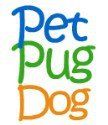Pug Dog Stenotic Nares
You are here: Pug Dog Health main page > > > Pug Dog Brachycephalic Airway Obstructive Syndrome >>> Pug Dog Stenotic Nares
Overview
Stenotic Nares is the medical term for pinched nostrils and is common with brachycephalic breeds including the Pug. While this can be seen on its own, this is one of several components that make up brachycephalic airway obstructive syndrome.
Stenotic nares is a congenital condition, meaning that it is present at birth. With this, there is a malformation of the cartilage in the nose which makes the nostrils too narrow. These narrow breathing passages cause a dog to have trouble drawing in enough air.
Please note:
PetPugDog is reader-supported, and some of the product suggestions on this page may be affiliate links. As an Amazon Associate we earn from qualifying purchases. This is at no extra cost to you and helps keep this site running.
Occurrence Rate
Approximately 50% of Pugs have stenotic nares to some degree and with those that do, approximately 50% also have elongated palate.
Age of Onset
Although stenotic nares are present at birth, associated breathing issues
may not be apparent until a Pug is several years old.
Symptoms
Treatment, Surgical
Overview:
The surgical procedure for this condition is considered relatively minor. A small piece of the inner wall of each nostril is removed to widen the openings. Though this used to primarily be done with scalpel, many veterinary surgeons are now using a CO2 surgical laser. With the laser option, there is little to no bleeding, no need for sutures, and very little post-operative discomfort, though general anesthesia is administered in either case.
If a Pug is going to be spayed or neutered and also requires surgery for stenotic nares, these two procedures are often done at the same time so that general anesthesia is only needed once.
Prognosis:
When treated surgically, prognosis is very good.
Recovery:
Most Pugs recover from surgery fairly quickly. Anti-inflammatory medications and/or antibiotics may be given afterward. A soft or liquid diet may be given for 24 to 48 hours and exercise can usually be reintroduced after one week.
The argument for delaying surgery:
Stenotic nares may be very pronounced during the teething phase but then the nostrils may widen to a certain extent once this phase is complete which means that any associated breathing problems may decrease or completely resolve. Therefore, with minor cases, surgery may be delayed until a puppy is passed the teething stage.
The argument for having surgery performed ASAP:
Moderate to severe cases of stenotic nares can cause a dog to put extreme effort into inhaling. Over time, this can put stress on the larynx which can ultimately lead to collapse; this is an extremely serious issue that can cause suffocation and can be fatal.
Note:
If a Pug has both stenotic nares and elongated palate and these conditions are severe enough to cause difficulty breathing, surgery is almost always the answer.
Did you find this article to be helpful?
If so, you'll appreciate having PetPugDog's GIANT Book of Pug Care which is available as both a hard copy (8.5 x 11" soft cover) and ebook (PDF).
Stay Informed:
Become a free PetPugDog Member
- Receive reminders when we add new pages of information. You'll also be able to suggest a topic for us to write about; we always look to Member suggestions.
Other helpful articles:
Pug Dog Grooming
- An overview of every grooming task that needs to be done to keep a Pug clean and well-groomed.
Pug Separation Anxiety
- Ways to help a Pug cope better, stay occupied, and be more relaxed when home alone.
Taking Care of a Pug's Teeth
- It's very important to keep your Pug's teeth clean and free of plaque. This can usually be accomplished at home if these tasks are done on time.
Pug Dog has a Bad Odor
- A list of the possible reasons why a Pug may smell bad and exactly how to remedy this.
Pug Wrinkle Care
- The facial folds of this breed need to be kept clean and dry or yeast infections can develop. Read how to care for the wrinkles and treat possible issues.

